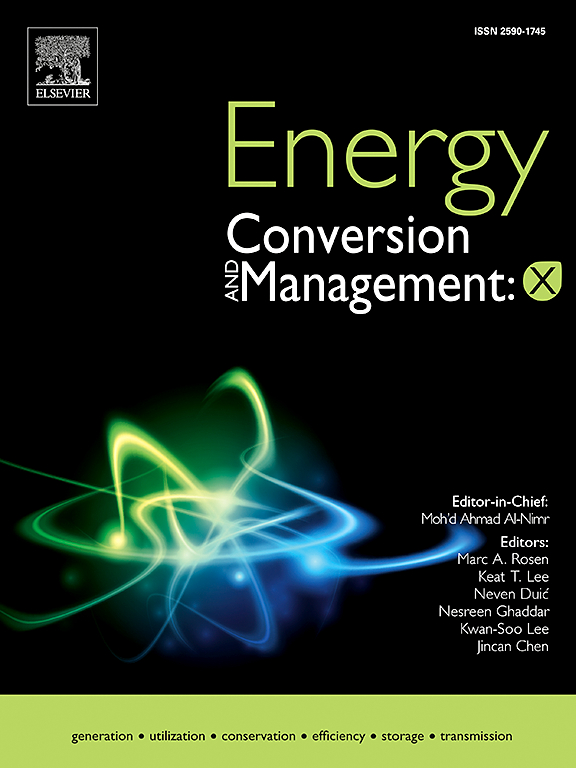Performance analysis of a turbofan engine integrated with flame-assisted fuel cells for combined propulsion and power generation with more electric aircrafts
IF 9.9
1区 工程技术
Q1 ENERGY & FUELS
引用次数: 0
Abstract
To address the growing demand for electricity and the low efficiency of conventional onboard power generation systems of aircrafts, fuel cells have received widespread attention. In this paper, an integrated propulsion and power generation system combining the turbofan engine and the flame-assisted fuel cell (FFC) system is proposed. It’s noted that the FFC used in this system is a new type of solid oxide fuel cell (SOFC). In this study, the thermodynamic models of the turbofan engine and the FFC system are established. Based on modeling, the performance of the FFC-Turbofan system is compared with that of a conventional turbofan engine. Additionally, the parametric study is conducted, including the effects of various design parameters of the turbofan engine, flight conditions, and operating parameters of the FFC system. The results indicate that as the electric power fraction (EPF) increases from 15% to 35%, compared to the turbofan engine, the FFC-Turbofan system shows a 14.06% reduction in specific fuel consumption (SFC) and an over 16% increase in thermal efficiency and overall efficiency. Furthermore, the performance advantages of the FFC-Turbofan system are more significant. Also, under conditions of higher compressor pressure ratio and lower turbine inlet temperature, as well as higher fan pressure ratio and higher bypass ratio, the FFC-Turbofan system achieves a lower SFC and higher overall efficiency. Furthermore, the increase of fuel utilisation and equivalence ratio can reduce the SFC and increase the overall efficiency. Finally, based on the analysis of flight condition parameters, the FFC-Turbofan system is preferable for aircrafts at high altitude and low speed.

求助全文
约1分钟内获得全文
求助全文
来源期刊

Energy Conversion and Management
工程技术-力学
CiteScore
19.00
自引率
11.50%
发文量
1304
审稿时长
17 days
期刊介绍:
The journal Energy Conversion and Management provides a forum for publishing original contributions and comprehensive technical review articles of interdisciplinary and original research on all important energy topics.
The topics considered include energy generation, utilization, conversion, storage, transmission, conservation, management and sustainability. These topics typically involve various types of energy such as mechanical, thermal, nuclear, chemical, electromagnetic, magnetic and electric. These energy types cover all known energy resources, including renewable resources (e.g., solar, bio, hydro, wind, geothermal and ocean energy), fossil fuels and nuclear resources.
 求助内容:
求助内容: 应助结果提醒方式:
应助结果提醒方式:


